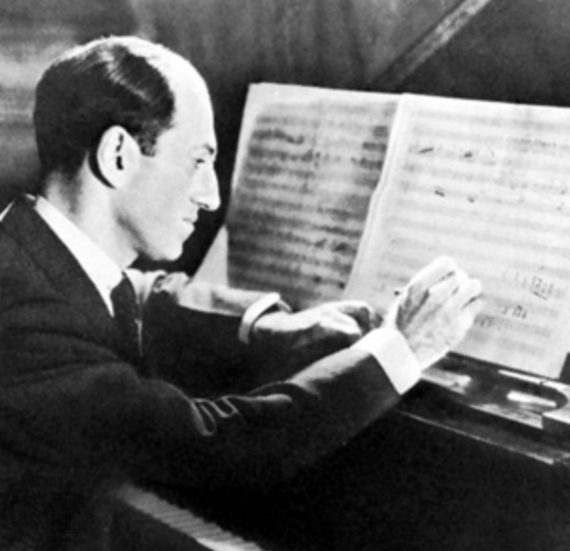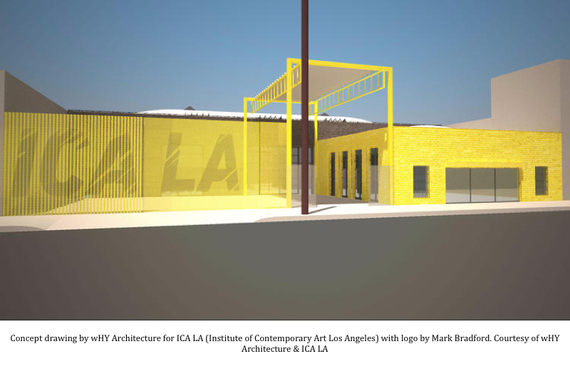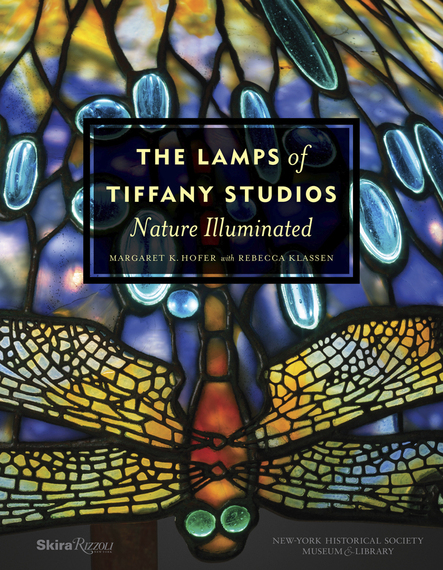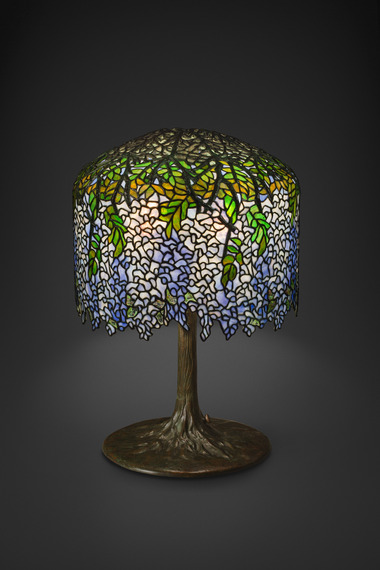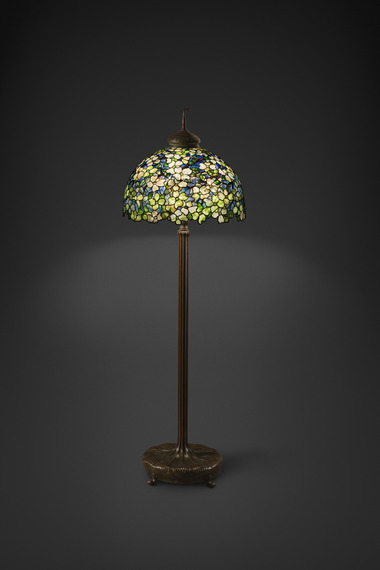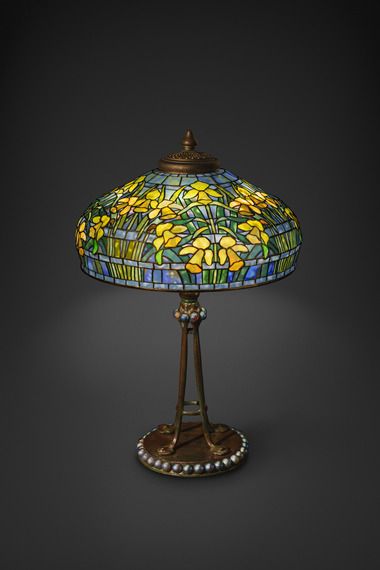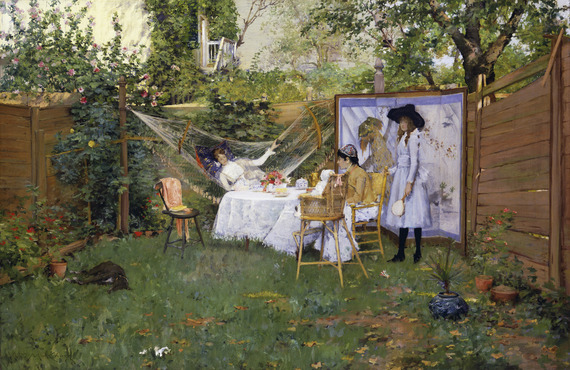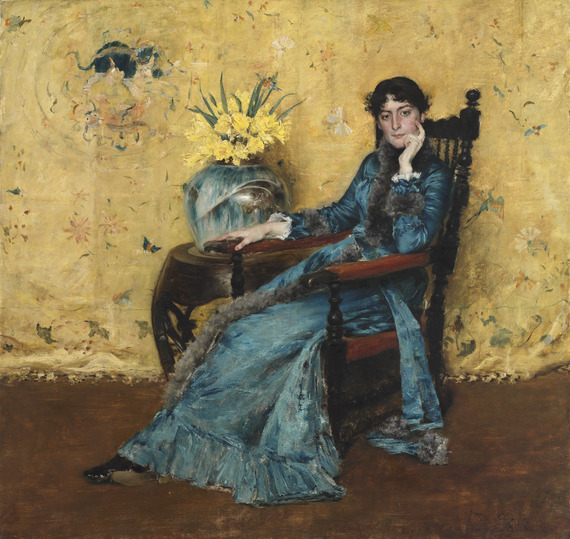"The only way to support a revolution is to make your own." Abbie Hoffman
![2016-10-25-1477426258-6703630-brooklynstreetartekgwastedlandjaimerojodetroit0916web6.jpg]() EKG Labs. Wastedland 2. Detroit, September 2016. (photo © Jaime Rojo)
EKG Labs. Wastedland 2. Detroit, September 2016. (photo © Jaime Rojo)
PREAMBLE
At any given moment a counter-culture is developing before your eyes. Authoritarian governments know this. So do, as it turns out, lifestyle brands, sociologists, and PR firms.
Born of a genuine disaffection with the dominant culture as it steamrolls blithely forward, counter-culture has the ability to draw sharp contrasts into focus, expose secrets, challenge hypocrisies, redress inequality. It can also crack open a moribund mindset and give oxygen and sunlight and water to new ideas, new ways of being, alternate paradigms.
![2016-10-25-1477426502-4121072-brooklynstreetartufo907williamthomasporterwastedlandjaimerojodetroit0916web.jpg]() UFO 907 & William Thomas Porter. Wastedland 2. Detroit, September 2016. (photo © Jaime Rojo)
UFO 907 & William Thomas Porter. Wastedland 2. Detroit, September 2016. (photo © Jaime Rojo)
Counter-culture is essential to growth of culture, and while it can be shocking, disruptive, even painful at times, the wise know that the marginalized often lead the body politic toward a stronger equilibrium, a more perfect union.
Graffiti may not have begun as a subculture or a counter-culture, but virtually all of our recognized institutions steadfastly resisted it. Over time, they have become more open to suggestion, if with reservations and conditions. Eventually, everything is transformed by it in degrees.
![2016-10-25-1477426557-9075815-brooklynstreetartekgwastedlandjaimerojodetroit0916web3.jpg]() EKG Labs. Wastedland 2. Detroit, September 2016. (photo © Jaime Rojo)
EKG Labs. Wastedland 2. Detroit, September 2016. (photo © Jaime Rojo)
DETROIT CHARTS THE MOVEMENT
May we suggest that when it comes to the counter-cultural aspects of graffiti and Street Art, Detroit is a fine example of being in multiple stages of acceptance and denial, with examples of the counter-culture all along the continuum from rejection to absorption.
During a recent visit we saw old-school Detroit graffiti heads with their elaborate pieces next to newcomer kids from other cities bringing a raw-graff anti-style. You could also find corporate lifestyle brands polishing their art-cool bonafides while gently intermingling with grassroots community-minded mural organizing.
Further up the financial ladder you'll witness blue-chip collector/investors getting down in a gallery culture that supports marquee art names, and major institutions courting younger "edgy" artists who started their "careers" far outside the mainstream, often outside the law.
![2016-10-25-1477426634-7347288-brooklynstreetartekgwastedlandjaimerojodetroit0916web8.jpg]() EKG Labs. Wastedland 2. Detroit, September 2016. (photo © Jaime Rojo)
EKG Labs. Wastedland 2. Detroit, September 2016. (photo © Jaime Rojo)
Andrew H. Shirley steps carefully in many ways as he leads us up a cracked staircase of oil-caked concrete, piss-poor lighting and the occasional puddle of murk. Our ears are still ringing from the sounds of a busted muffler in his car and we're mulling over the sight of his dashboard vitrine that seemed to contain bones, feathers, amulets and pop culture debris reflecting in a ochre filmed windshield.
On the way here to Lincoln Art Park, we have passed graffitied car carcasses, crumbling ex factories, and fire torched exoskeletons of houses - all which lead to this loading dock entrance of a building once owned by Ford, now run as a recycling plant and, as it turns out, an art exhibition gallery.
![2016-10-25-1477426733-8272688-brooklynstreetartwastedlandjaimerojodetroit0916web1.jpg]() Our ride to Wastedland 2. (photo © Jaime Rojo)
Our ride to Wastedland 2. (photo © Jaime Rojo)
"So there was 40 years of garbage and the whole floor was filled with it," Andrew says, "I came in here and I had to unload all of that sh*t by myself".
A native of the big D, the slim-framed Mr. Shirley has spent half of his 40 years outside of it; writing graffiti, pitching and creating art projects, promoting scenes, studying film making and custom bike-making... generally pushing the margins of cultural acceptability in a way that looks sketchy on a resume - but would make smart brands salivate, if they had the guts.
"This is the 20th anniversary of me leaving this town and I have been back several times with several different shows," he says about the group exhibitions and events that feature what he calls 'underground aesthetics'.
"This is the first big public project where I brought a lot of my friends from New York and included the artists and makers here in Detroit who I have come to know over the years - all under one roof and showcasing all of their talents."
![2016-10-25-1477426944-2749628-brooklynstreetartwastedlandjaimerojodetroit0916web3.jpg]() Wastedland 2. Detroit, September 2016. (photo © Jaime Rojo)
Wastedland 2. Detroit, September 2016. (photo © Jaime Rojo)
THE FILM
Also, a film screening.
It's the debut of "Wastedland2" in the middle of this 7,000 square foot dark cavern with a small grouping of stolen church pews facing the screen. The original Wastedland was a smaller tale - a petri dish of ideas that expanded and took root in a showier piece of exploration and mystery with higher production values.
The seating area is orbited by mini-dioramas of characters and scenes featured in the half hour graffiti mockumentary. Here is a handmade shack by Adam Void that perhaps epitomizes a metaphorical outsider clubhouse mentality common to the graffiti game.
To stage left is a stuffed 6-foot tall Cranky Cat standing erect amid piles of spent paint cans, a fire extinguisher, and exhaust tubes leading nowhere. In the movie Cranky is a feral and grouchy/whining character who propels the drunken aerosol action forward with escapades of ex-urban painting and existential fireside conversation with Wolftits and Amoeba Man in their "Wizard of Oz"-like pilgrimage in search of truths. There is no Dorothy and no Toto in the film, but the animal head masks are trippy and comical even in the darkest moments. Each graffiti artist, according to EKG, was asked to make a costume that mimicked their spirit-animal. Amoeba Man's plastic-wrapped head mask is a tour-de-force.
![2016-10-25-1477427098-6042759-BrooklynStreetArtcopyrightWastedland2740ScreenShot20161021at6.22.26PMcopy.png]()
Standing silently in the center of the floor behind the seating area in the exhibit is the massive tentacled steam-punked multi-eyed orb made of wood and steel that gives physical presence to the elusive anonymous graffiti crew called UFO 907. He also is the films' diety and the holder of the aforementioned elusive truths.
Behind him on the wall is another slatted and animated version of UFO - perhaps more similar to the wiggly UFO 907 character sprayed across hundreds of walls in NYC. This animated sculpture version has a reservoir of black ink that drips on the floor.
Wastedland 2 is a road trip without road, a therapeutic buddy film without saccharine, staged in a post apocalyptic terrain that is revealed as graffiti oasis. The hapless beer- and weed-fueled journey is pure youthful angst suspended in chemicals and many in the audience laughed in recognition at the head-banging frustration voiced about fundamental life questions by these furry characters.
Despite the obvious obstacles posed by frozen facial expressions, there is a warmth in the interactions. Of note particularly is the party scene of mixed genders and the stumbling awkwardness of Wolftits with a potential lady friend; this will be the first time you've seen the mating game portrayed quite like this.
![2016-10-25-1477427169-3622298-brooklynstreetartwolftitswastedlandjaimerojodetroit0916web.jpg]() "Cranky Cat's Hovel" with Cranky Cat. Wastedland 2. Detroit, September 2016. (photo © Jaime Rojo)
"Cranky Cat's Hovel" with Cranky Cat. Wastedland 2. Detroit, September 2016. (photo © Jaime Rojo)
"This piece played the character of God in the film," Andrew says, pointing to the all-seeing sculpture. "You may have seen that it was actually in a field in upstate New York."
Yes, we made the trip to the rolling hills of cow-country to see it twice in a field of gently waving weeds. Previously we saw it in the lobby of the Brooklyn Academy of Music. Previous to that we saw it being carved, soldiered, and under construction in UFO's studio in Brooklyn. Truthfully, it does seem rather god-like.
Andrew says he transported the hulking orb by truck from rural New York to post-industrial Detroit, which must have taken 9 or 10 hours if he crossed into Canada and squeezed between the Great Lakes of Ontario and Erie.
![2016-10-25-1477427238-6240305-brooklynstreetartekgwastedlandjaimerojodetroit0916web4.jpg]() EKG Labs. Wastedland 2. Detroit, September 2016. (photo © Jaime Rojo)
EKG Labs. Wastedland 2. Detroit, September 2016. (photo © Jaime Rojo)
This old factory has definitely not been refurbished into a "white box" gallery space, and there are no guards. There may be a guard dog. The floors are occasionally flooded by a leak from a source that is hard to pinpoint, the lighting is so irregular as to appear incidental, and visitors should be careful not to bang their head on the soot-covered sculptures of clouds by artist DarkClouds that are affixed slightly above with stalactite-like ebony drips that could be solid or liquid.
![2016-10-25-1477427285-2590662-brooklynstreetartdarkcloudwastedlandjaimerojodetroit0916web2.jpg]() Dark Clouds. Wastedland 2. Detroit, September 2016. (photo © Jaime Rojo)
Dark Clouds. Wastedland 2. Detroit, September 2016. (photo © Jaime Rojo)
As you parse the floors and avoid the paint-peeling columns Mr. Shirley is narrating just ahead of you with an earnest voice that weaves in and out of range, dashing off to find an extension chord perhaps, or a ladder, or to find someone to come explain the muscular graffiti pieces on display in the adjoining passage.
GANGSTERS AND WHITE KIDS
![2016-10-25-1477427387-8277050-brooklynstreetartBRZMISHSYWwastedlandjaimerojodetroit0916web.jpg]() BRZM ISH/ SYW. Wastedland 2. Detroit, September 2016. (photo © Jaime Rojo)
BRZM ISH/ SYW. Wastedland 2. Detroit, September 2016. (photo © Jaime Rojo)
Presently a twenty-something guy named Zak Warman appears and walks us past 10 or so freshly wild and layered graffiti pieces each displayed in their own bay, each representing important players from the last couple of decades in the Detroit graffiti scene. Zak tells us says that the Motor City scene is characterized by two distinct styles and constituencies at the moment, and this show combines both.
"I guess like the 'gangster graffiti' and the 'white kid graffiti' would be the best way to put it," he explains while surveying the lineup and glancing at the rest of the show. "You know, the people who were like born in the gutter here and the people who came here in their teen years who moved here and such."
![2016-10-25-1477431253-1054669-brooklynstreetartyogurtdfwwastedlandjaimerojodetroit0916web.jpg]() YOGURT / DFW. Wastedland 2. Detroit, September 2016. (photo © Jaime Rojo)
YOGURT / DFW. Wastedland 2. Detroit, September 2016. (photo © Jaime Rojo)
"There's people here who would never have painted together but maybe it was just the way that I showed them or my proposal. I was like 'let's just set everything aside that's happened over the years - this is about us it is not about you. This is about everybody not just about our own f**king personal graff beef.' "
"It's like the first time that everyone has come together into one big family."
Mr. Shirley jumps in to further describe the nature of the work and the creators. "It is very important in Detroit to be able to 'piece', " he says of the verb 'piece' that describes the noun 'piece' - a large, complex, and labor-intensive graffiti painting.
"In some places having a good tag is that first staple and then you move up from that tag," he explains. "But here, because of the amount of time and space that you have to develop your craft all of these dudes really regard piecing above everything else."
He walks down to the end of the line to point at a painted work. "These guys at the end - PERU and ARMY - they were doing 10-color pieces on the streets, as was SEKT - before anyone else. These guys represent a span of time from the early and mid 90s into the 2000s." In most cities you don't have that luxury of time to develop an illegal piece, but Detroit has a number of stories like this.
![2016-10-25-1477427477-153047-brooklynstreetartperuarmywastedlandjaimerojodetroit0916web.jpg]() PERU ARMY. Wastedland 2. Detroit, September 2016. (photo © Jaime Rojo)
PERU ARMY. Wastedland 2. Detroit, September 2016. (photo © Jaime Rojo)
A common story around Detroit is that, due to de-industrialization, the collapsing economy and the shrinking municipal budgets in the 1990s and 00s, the police were only arresting people for felonies. Since graffiti was not a felony, the police would simply drive by while aerosol was being sprayed.
"It's not a myth," says Andrew. "I painted a water tower one time - it's still here today." He recounts a story where one cop sat vigil on a rooftop for hours watching him paint on the water tower, only to be replaced by another until finally the painting was done. "I think he was just making sure that I didn't get hurt and that I was okay," he says with a sense of wonder.
![2016-10-25-1477427527-3075862-brooklynstreetartSEKTEBCDFWwastedlandjaimerojodetroit0916web.jpg]() SEKT EBC / DFW. Wastedland 2. Detroit, September 2016. (photo © Jaime Rojo)
SEKT EBC / DFW. Wastedland 2. Detroit, September 2016. (photo © Jaime Rojo)
PARTING FOG
![2016-10-25-1477427650-4622569-brooklynstreetartekgdrakewastedlandjaimerojodetroit0916web5.jpg]() EKG Labs . Drake. Wastedland 2. Detroit, September 2016. (photo © Jaime Rojo)
EKG Labs . Drake. Wastedland 2. Detroit, September 2016. (photo © Jaime Rojo)
It's time to depart the Wastedland 2 exhibition and go to the streets in this run-down part of Detroit, where the art on the walls is roughly the same as the stuff we've just come to see.
It is unclear if this underground is simply about aesthetics, or if there is a deeper message. Maybe this is not a counter-culture after all, but a subculture.
As we stand by the elevated installation by artist EKG, dry-ice smoke billows out of a fully formed madman's laboratory behind black curtains. Amid the visual field of blinkering orange light tubes and smoke that harken back to 1950s Sci-Fi movies, you see another character from the movie; the film's box-headed admin assistant who robotically types out reams of black scrolls full of orange symbols to decode at a pivotal moment. This is an apt skillset to possess in an underground scene that is heavily coded and rife with implied and layered messages. A simple man of few words, EKG dubbed his character
The Cyber Spirit Stenographer in The Court of The Overlord.
![2016-10-25-1477427731-7013143-brooklynstreetartekgwastedlandjaimerojodetroit0916web2.jpg]() EKG Labs. Wastedland 2. Detroit, September 2016. (photo © Jaime Rojo)
EKG Labs. Wastedland 2. Detroit, September 2016. (photo © Jaime Rojo)
We consider the amorphous steam from the Cyber Spirit and wonder how porous the veil is between the mainstream and the outsider artists who fuel this scene. When does counter-culture become culture? We can't say for sure.
"Detroit is a pretty good example of counter-culture becoming culture, actually," replies Andrew H. Shirley to our inquiry. "There is this corporatization that happens and there are culture vultures on the corners and in the nooks and crannies in underground scenes of America and they are exploiting it for monetary gain."
True. But there is also word-of-mouth that spreads the news and the willing, thrilling adoption of techniques and languages by the naturally inquisitive types whose brain synapses are electrified by discovery. With shows like this does Mr. Shirley feel like he is aiding and abetting the mainstreaming of a subculture like graffiti and its D.I.Y tributaries?
"I'd like to pull back the curtains and give a little peek of it but I'm not trying to shine too many flashlights or provide too much of a narrative into the 'hows' and 'whats' and 'whys'. I think it's important for the common man to see that there is an alternative perspective because too often they are just inundated by the media that is controlled by the corporations - who are telling them what to wear, how to think, how to act, what to pray to, what to feel and how to live their life."
![2016-10-25-1477427809-4866125-brooklynstreetartekgwastedlandjaimerojodetroit0916web1.jpg]() EKG Labs. Wastedland 2. Detroit, September 2016. (photo © Jaime Rojo)
EKG Labs. Wastedland 2. Detroit, September 2016. (photo © Jaime Rojo)
SOME LAST WORDS ON FESTIVALS
He does have a little beef with mural festivals though.
He thinks his Wastedland 2 show deals a fairer hand to local artist communities. "This is kind of in contrast to what seems to be an international phenomenon of bringing muralists, many of them the same muralists, from city to city - developing a 'look' that is kind of becoming a blanketed look," he says.
"Detroit has so many f**king artists and part of the problem for me is that there are a lot of these mural festivals that are two thirds or 75% or 90% international artists and 10% or 20% local artists. It doesn't allow for the city to see what is really happening here. I wanted to have a show where the background and the forefront of the show was about what was happening here."
"While I do think the mural festival is very important in bringing in outside influence and outside interest into the city, for me it is just as important, or more important, to really praise and understand the origins of these movements in Detroit. That's why I have reached out and had the help of friends to get these artists into the show."
That said, we'll say that the Wastedland 2 event was heavily promoted by the folks at the recent Murals In The Market Festival and many of the international artists who participated in the mural festival were also in attendance at the Shirley curated show, the bonfires, and music events at the sculpture park - as well as the screening of the movie.
Of course we also saw Gen Y and even Gen Z there with backpacks full of paint, dangling their legs off the retaining wall that overlooked the huge bonfire -- who seemed to disappear when the freight train that ran along the lots' perimeter came to a halt. There was also a guy from the Detroit Institute of Arts and a local plumber who talked to us about building a tree house in his front yard. Maybe it is harder to define culture than we thought.
![2016-10-25-1477428024-2078780-brooklynstreetartwastedlandjaimerojodetroit0916web2.jpg]() Wastedland 2. Detroit, September 2016. (photo © Jaime Rojo)
Wastedland 2. Detroit, September 2016. (photo © Jaime Rojo)
![2016-10-25-1477428192-4481680-brooklynstreetartAmySmallsGeorgeVidaswastedlandjaimerojodetroit0916web.jpg]() Amy Smalls. George Vidas. Wastedland 2. Detroit, September 2016. (photo © Jaime Rojo)
Amy Smalls. George Vidas. Wastedland 2. Detroit, September 2016. (photo © Jaime Rojo)
![2016-10-25-1477428251-1116083-IbrooklynstreetartAmySmallsGeorgeVidasgen2wastedlandjaimerojodetroit0916web.jpg]() Amy Smalls . George Vidas . GEN2. Wastedland 2. Detroit, September 2016. (photo © Jaime Rojo)
Amy Smalls . George Vidas . GEN2. Wastedland 2. Detroit, September 2016. (photo © Jaime Rojo)
![2016-10-25-1477428335-6254528-brooklynstreetartramboufo907ryancdoylegreghendersonwastedlandjaimerojodetroit0916web.jpg]() Rambo . UFO907 . Ryan C. Doyle. Wastedland 2. Detroit, September 2016. (photo © Jaime Rojo)
Rambo . UFO907 . Ryan C. Doyle. Wastedland 2. Detroit, September 2016. (photo © Jaime Rojo)
![2016-10-25-1477428393-9779949-brooklynstreetartufo907ramboryancdoylewastedlandjaimerojodetroit0916web1.jpg]() Rambo. UFO907. Ryan C. Doyle. Wastedland 2. Detroit, September 2016. (photo © Jaime Rojo)
Rambo. UFO907. Ryan C. Doyle. Wastedland 2. Detroit, September 2016. (photo © Jaime Rojo)
![2016-10-25-1477428524-7886897-brooklynstreetartramboufo907ryancdoylewastedlandjaimerojodetroit0916web.jpg]() Rambo. UFO907. Ryan C. Doyle. Wastedland 2. Detroit, September 2016. (photo © Jaime Rojo)
Rambo. UFO907. Ryan C. Doyle. Wastedland 2. Detroit, September 2016. (photo © Jaime Rojo)
![2016-10-25-1477428652-1342824-brooklynstreetartamandawongandrewhshirleywastedlandjaimerojodetroit0916web.jpg]() Rambo. UFO907. Ryan C. Doyle. Wastedland 2. Detroit, September 2016. (photo © Jaime Rojo)
Rambo. UFO907. Ryan C. Doyle. Wastedland 2. Detroit, September 2016. (photo © Jaime Rojo)
![2016-10-25-1477430685-622663-brooklynstreetartamandawongandrewhshirleywastedlandjaimerojodetroit0916web.jpg]() Amanda Wong . Andrew H. Shirley. Wastedland 2. Detroit, September 2016. (photo © Jaime Rojo)
Amanda Wong . Andrew H. Shirley. Wastedland 2. Detroit, September 2016. (photo © Jaime Rojo)
![2016-10-25-1477430613-313038-brooklynstreetartdarkcloudwastedlandjaimerojodetroit0916web1.jpg]() Dark Clouds. Wastedland 2. Detroit, September 2016. (photo © Jaime Rojo)
Dark Clouds. Wastedland 2. Detroit, September 2016. (photo © Jaime Rojo)
![2016-10-25-1477430556-3068238-brooklynstreetartwolftitsamysmallsgeorgevidaswastedlandjaimerojodetroit0916web.jpg]() Wolftits popcorn making machine. Wastedland 2. Detroit, September 2016. (photo © Jaime Rojo)
Wolftits popcorn making machine. Wastedland 2. Detroit, September 2016. (photo © Jaime Rojo)
![2016-10-25-1477430313-5447198-brooklynstreetartadamvoidwastedlandjaimerojodetroit0916web.jpg]() Adam Void. Wastedland 2. Detroit, September 2016. (photo © Jaime Rojo)
Adam Void. Wastedland 2. Detroit, September 2016. (photo © Jaime Rojo)
![2016-10-25-1477430163-7189101-Ibrooklynstreetartgreghendersonwastedlandjaimerojodetroit0916web.jpg]() Greg Henderson. Wastedland 2. Detroit, September 2016. (photo © Jaime Rojo)
Greg Henderson. Wastedland 2. Detroit, September 2016. (photo © Jaime Rojo)
Participating artists at Detroit Wastedland2, curated by Andrew H. Shirley include ARMY, BRZM, DRAKE, DONT, DYKE, ELMER, FOUR EYES, LIGER, MINCE, PERU, PORAB, REVEREND, SECT, SKWAT, TOUCH, TURDL, YOGRT and others from Detroit and also artists Adam Void, Amanda Wong, Amy Smalls and George Vidas , Ben Wolf, DARKCLOUDS, EKG, Greg Henderson, Hugo Domecq, RAMBO, Ryan C. Doyle, UFO 907, William Thomas Porter, WOLFTITS, among others.
Performers included The Unstoppable Death Machines, DJ Ihatejail.com (Crazy Jim from Wolf Eyes), Ishtar, Lt. Dan, and Dj's Abacus, Prismviews, Black Noi$e, Abby and 100% Halal Meat
Next stop on the film's multi-city launch: Richmond,Virginia on November 4.
"Wastedland 2" and the accompanying show will feature new artwork from: Adam Void, Amanda Wong, Amy Smalls and George Vidas, Andrew H. Shirley, Conrad Carlson, DARKCLOUDS, EKG, Greg Henderson, NOXER, RAMBO, Russell Murphy, Ryan C. Doyle, UFO 907, William Thomas Porter, WOLFTITS, and live performances from The Unstoppable Death Machines and Richmond's DUMB WAITER and TOWARD SPACE. There will also be graffiti installations from local Richmond vandals and the 907 crew.
____________________
Please note: All content including images and text are © BrooklynStreetArt.com, unless otherwise noted. We like sharing BSA content for non-commercial purposes as long as you credit the photographer(s) and BSA, include a link to the original article URL and do not remove the photographer's name from the .jpg file. Otherwise, please refrain from re-posting. Thanks!
A version of this article is also posted on Brooklyn Street Art here. and
here
Read all posts by Steven P. Harrington and Jaime Rojo on The Huffington Post
HERE.
See new photos and read scintillating interviews every day on
BrooklynStreetArt.com
Follow us on Instagram @bkstreetart
See our
TUMBLR page -- This feed and its contents are the property of The Huffington Post, and use is subject to our terms. It may be used for personal consumption, but may not be distributed on a website.

